Duxford Air Festival 2019
By Juri Keyter

Supermarine Spitfire Mk 1A N3200 - A genuine Dunkirk veteran
Although the Spitfire was the closing act at this year's Air Festival at the impressive Imperial War Museum in Duxford, it was also the reason we were all at this air show and probably why most of you are reading this report.
Whenever you hear the name “Duxford”, a Spitfire is the first thing that come to mind. Unlike the annual “Flying Legends” Air Show at Duxford, where you can expect to see 14 Spitfires in the air at the same time, this event is dedicated to a much wider variety and era of aviation only featured one Spitfire. The organisers kept the best for last, especially in this case where it is a genuine Dunkirk veteran. This Spitfire (N3200), built in 1939 and based at 19 SQN in Duxford, was hit during the evacuation of Dunkirk. Sea and sand covered the wreck and it was discovered again only in 1986. It took 28 years before this restoration was finally completed and this aircraft returned to the sky in 2014. During the display the commentators remained quiet, the spectators did not say a word and all you could hear was the 1,030hp Rolls-Royce Merlin effortlessly chattering through the sky. What a spectacle!!!

Supermarine Spitfire Mk 1A - In a victory roll
One thing certainly making air events at Duxford unique is the freedom visitors have to roam the flight line before the show start. This gives everyone the opportunity to get close to a Spitfire, a Mustang, a fighter jet and even an attack helicopter.
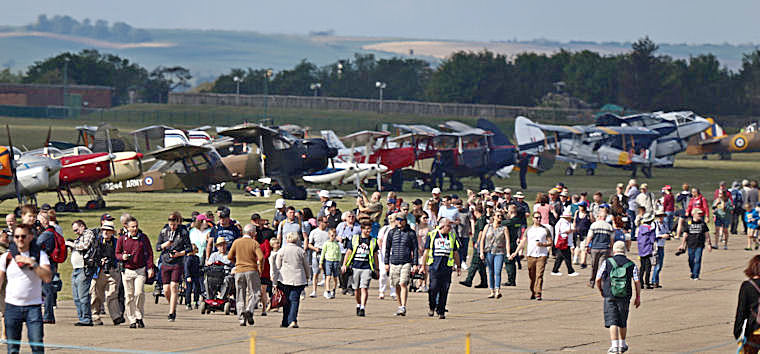
Air show visitors roaming the flight-line
A BAE Systems Typhoon officially kicked off the show as its 2 Eurojet EJ200 turbofans roared in from the west of the field. A spectacular and capable aircraft flown in from 29 SQN, RAF Coningsby.


BAE Systems Typhoon FGR4
88 years after the de Haviland Tiger Moth flew for the first time, a group of 9 Tigers in formation was seen again at this aviation celebration. Considering the fact that these aircraft are significantly under-powered compared to today's aircraft and the slow speed they fly, this large formation basically has to break up at the end of each fly-past, turn around and re-join the formation before they can start their next run.


Tiger 9 Team flying - de Haviland DH82A Tiger Month
If you didn't know where the name “Blade Slapper” came from, you would now know if you attended this air show. The rhythm of the Boeing Chinook's 2 Textron Lycoming T55 turboshaft engine and massive counter-rotating rotors rattle your bones.

Boeing Chinook from 27 SQN, RAF Odiham
Another interesting combination was a Harvard & Jet Provost T3 Duo. I never thought that this would even be possible, but I must say that the Harvard performed very well but the Provost pilot was brilliant to maintain his position, even on the inside at times.
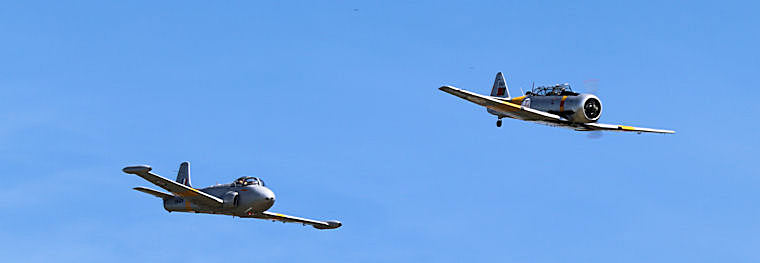
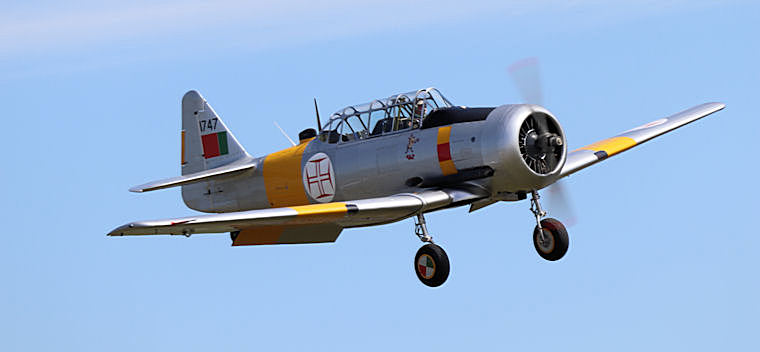
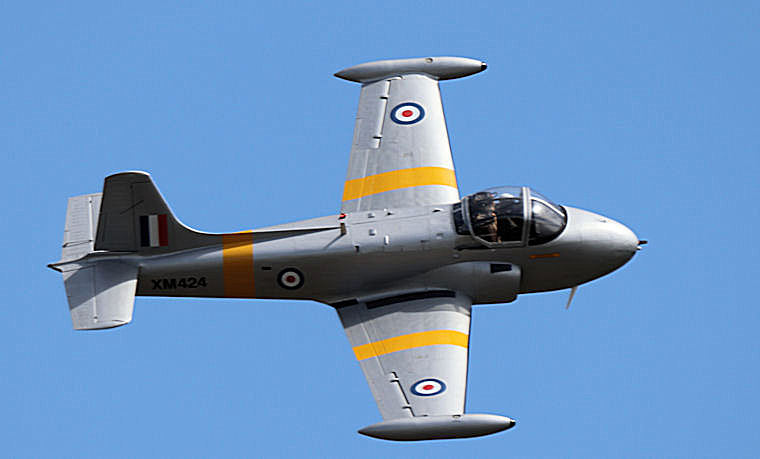
Jet Provost T3 and Harvard Duo
“Perhaps old but certainly not cold” - was the message from a BAC 167 Strikemaster pair who thrilled the crowd with a remarkable performance. These aircraft were developed and built in 1967 and were essentially a weaponised version of the Hunting Percival Jet Provost T5 trainer.

British Aircraft Corporation (BAC) 167 Strikemaster
Various historic army aircraft performed on the day including an Auster AOP.9, a de Haviland Beaver, an Augusta Bell Sioux helicopter and a Westland Scout helicopter.


Auster AOP.9 & a de Haviland Canada DHC-2 Beaver
Pyrotechnics, smoke and cannon fire pretty much describe the AgustaWestland Apache attack helicopter display.

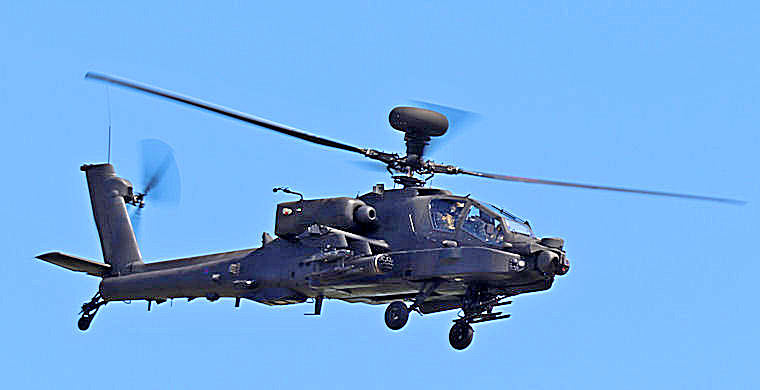
AgustaWestland Apache AH Mk1 attack helicopter
American manufactured aircraft also featured at the show including a Catalina, a B-17 Flying Fortress, a Republic P-47D Thunderbolt, a North American TF-51D Mustang and 2 Boeing Stearman Wingwalker biplanes giving us a feel of 1930s barnstorming.

Consolidated PBY-5A Catalina

Boeing B-17 Flying Fortress
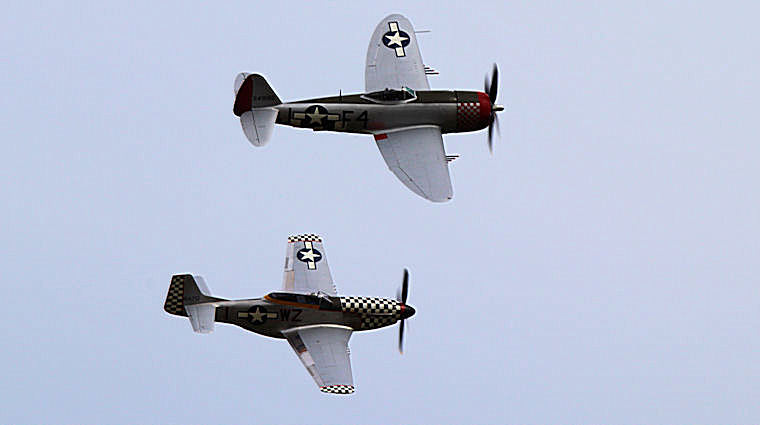
P-47D Thunderbolt in formation with a TF-51D Mustang

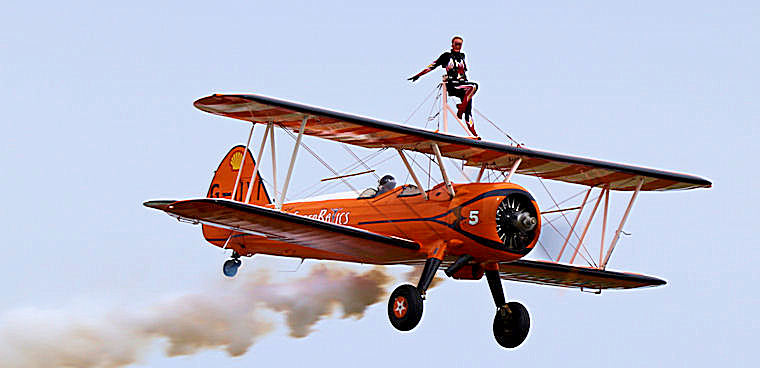
Boeing PT-17 Stearman Wingwalkers
I have seen many jet formation teams around the world but this was my first opportunity to witness the Breitling Jet team. Gathering from the team narrator's introduction, the pilots in this team are all seasoned Mirage fighter and display pilots. Their military precision combined with the noise generated by the Ivchenko turbofan engines throughout their 25-minute routine was exhilarating.


Breitling Jet Team - Aero L-39 Albatros formation
If you are an aviation enthusiast or enjoy WWII history, you will know the Douglas Bader story. For those without TVs, Bader was a double amputee British fighter Ace who flew Spitfires in WWII with his 2 prosthetic legs. Without going in to too much detail of this remarkable man, he was the Wing Commander at Tangmere flying sorties over north-western Europe. Bader would announce his French coastline crossing with “Bader's Bus Company on time” and inspired by this, it is appropriate that the first British all-disabled display team named themselves “The Bader's Bus Company Display Team”. The 3 Piper PA-28 Cherokees they fly may not be as impressive as the Typhoon we saw at the beginning of the show, but the courage, perseverance and commitment these pilots radiate is an inspiration to us all. I must add that their display was not just a simple formation and although these aircraft are not aerobatic, they still flew a complex display, constantly changing their formation in windy conditions. To these 3 pilots, Mike Wildeman, Alan Robinson and Barry Hobkirk, we salute you!!

First British disabled display team - Piper PA-28
|
                 |























